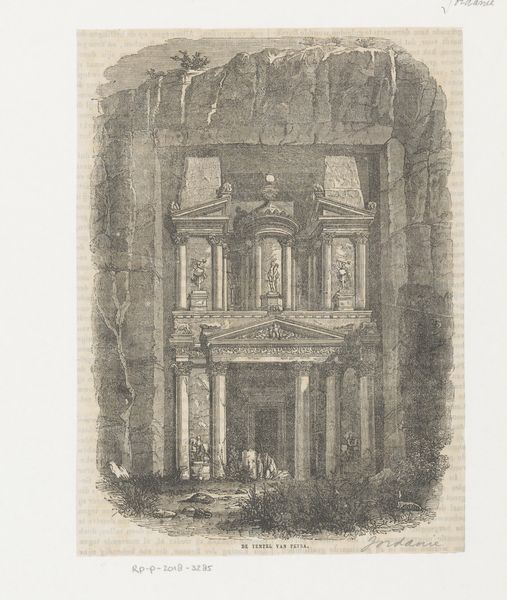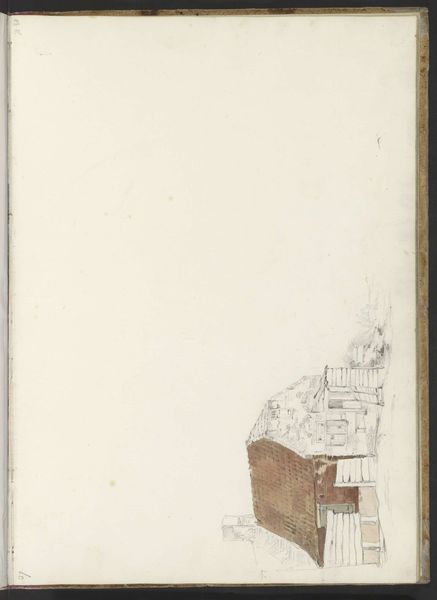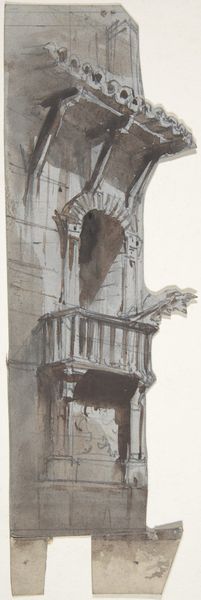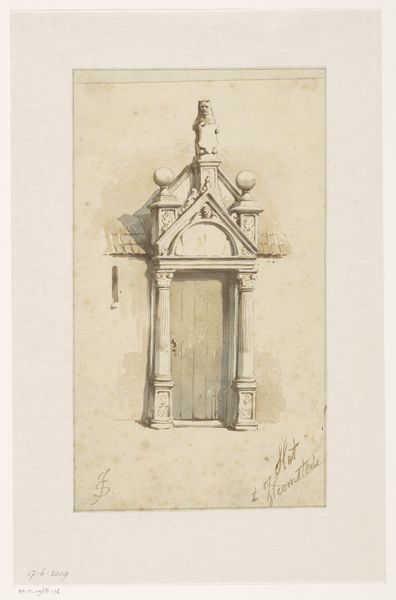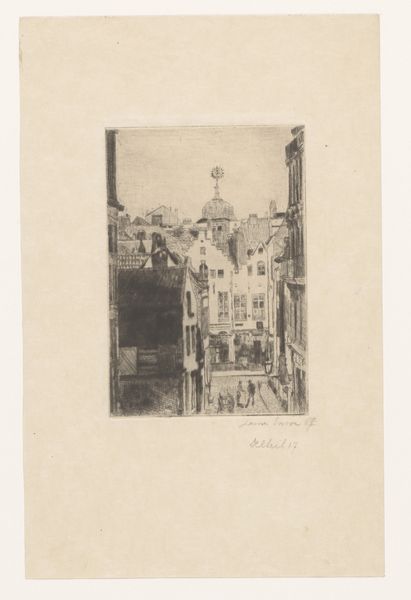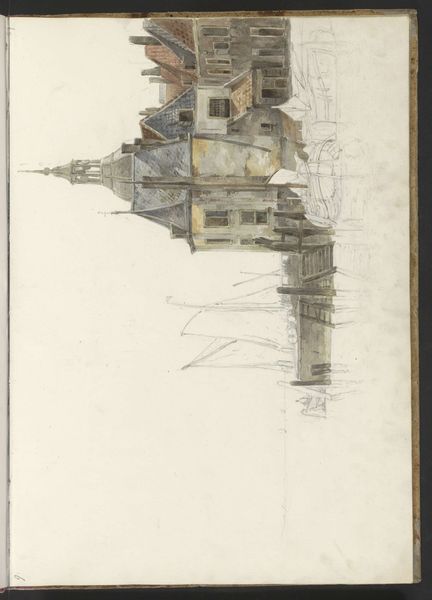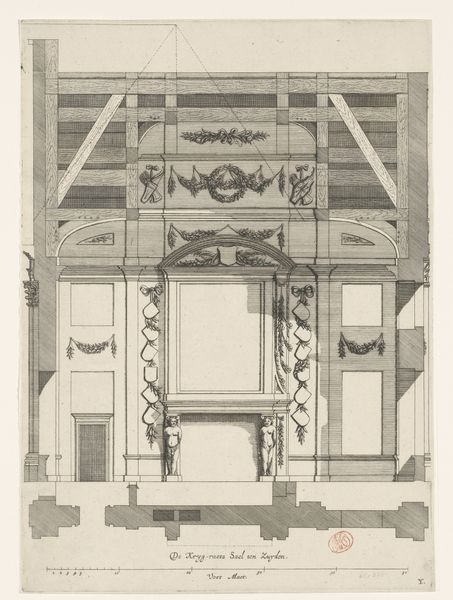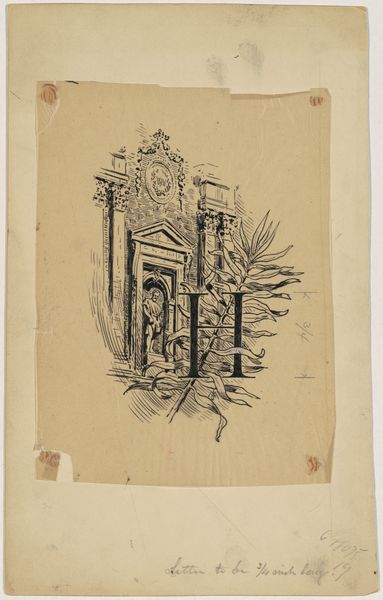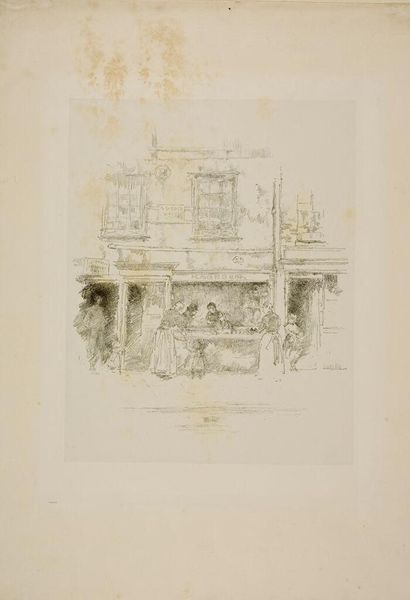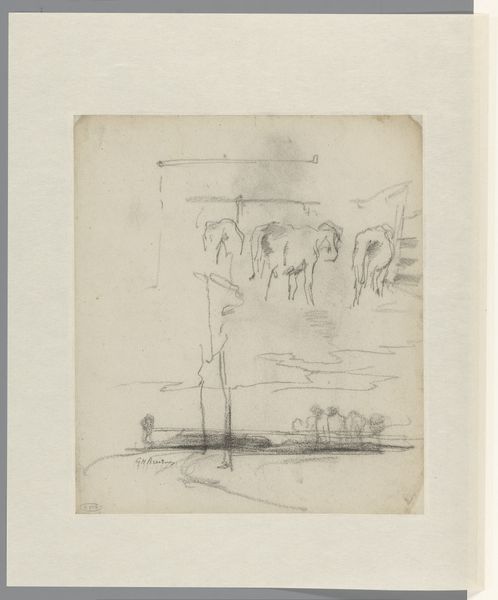
painting, watercolor
#
water colours
#
dutch-golden-age
#
painting
#
watercolor
#
cityscape
#
genre-painting
#
watercolor
#
realism
Dimensions: height 401 mm, width 280 mm
Copyright: Rijks Museum: Open Domain
Editor: Here we have Johannes Bosboom’s "Studie van de bovenste verdieping van een hoekhuis," which translates to "Study of the Upper Floor of a Corner House," created sometime between 1827 and 1891. It’s a watercolor painting, currently residing here at the Rijksmuseum. I'm struck by how ordinary the subject matter is, yet Bosboom captures it with such delicate light. What do you make of its place within the broader context of Dutch art? Curator: Well, it’s important to remember the Dutch Golden Age obsession with representing daily life. While that period had passed by Bosboom's time, its influence certainly hadn't. Genre paintings, cityscapes like this – they spoke to a burgeoning middle class eager to see their world reflected in art. The choice to focus on the upper story also presents an interesting viewpoint. Is this accessible, or are we meant to feel like we're looking at it from a removed perspective? Editor: That’s interesting, the idea of a removed perspective. It feels almost like a fleeting glimpse rather than a formal portrait of architecture. I wonder how its location, now displayed in a museum, has altered its reception? Curator: Museums play a huge role in legitimizing certain types of imagery. This simple study, initially perhaps intended as a preparatory work, gains a certain prestige and significance once it's placed within the hallowed halls of a national museum like the Rijksmuseum. We start to view it not just as a depiction of a building, but as a window into the past, a commentary on urban life. Consider the watercolor medium itself. Is it valued less or more when placed next to a 17th century oil painting depicting very similar places or settings? Editor: That’s such a valuable point about how museums elevate and re-contextualize art. It definitely makes me reconsider how I initially viewed this piece! Curator: Indeed. And I appreciate you pointing out the impact of its delicate light - this helps us think about this image's importance in a post-impressionist world where light dominates subjecthood and perception. I’ll certainly be thinking about the power of display and observation differently now!
Comments
No comments
Be the first to comment and join the conversation on the ultimate creative platform.

